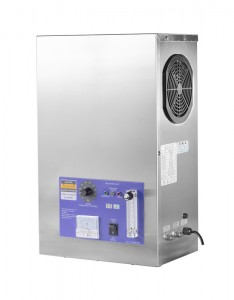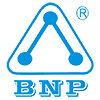Ozone production identification method
Ozone generator according to the air source system can be divided into air source ozone system and oxygen source ozone system. Air source ozone system configuration is basically air compressor, frozen dryer, adsorption dryer, four-stage filter;
The configuration of the ozone system is basically an air compressor, a refrigerated dryer, a multistage filter, and an oxygen generator system (when the oxygen tank is used as an oxygen source, the above mechanical equipment is not required), and the parameters affecting the output of the ozone generator are basically based on six points: concentration, gas volume, pressure, power, current, and temperature. The six statistics complement each other and are indispensable. Each data will affect the actual output of the ozone generator.
Ozone production (g/h) = concentration × gas volume (at standard atmospheric pressure)
Ozone equipment reaction chamber generally has a certain pressure, then ozone generator output (g/h) = concentration × gas volume × pressure (1 standard atmospheric pressure under the gas pressure).

According to the formula, the actual ozone production is determined by the concentration, gas volume and pressure. Most ozone generator manufacturers have inlet rotor flowmeters, cavity pressure gauges, and three-phase ammeters in the equipment configuration, which can be used to simply judge the gas volume, pressure, and current with the naked eye.
Description of O3 generator parameters
Detailed analysis of the six basic parameters affecting the output of ozone generators: concentration, gas volume, pressure, power, current, temperature.
(1) Concentration
Ozone concentration according to the specifications of the equipment, structure and discharge parameters, ozone concentration monitoring, can be determined according to the ozone concentration detection instrument, a more accurate way, under conditions, the use of iodometry and other chemical titration monitoring. Unit of ozone concentration mg/L or g/m3.
At present, there are three kinds of technical cavities that are more popular in China: quartz glass tube, enamel tube and plate ozone.
The international ozone technology adopts quartz glass tube cavity, and the average concentration of ozone generator in the air source system of this technology is 25mg/L; Oxygen source system ozone generator average concentration 120mg/L; When liquid oxygen is used as the air source to supply the ozone generator, the average ozone concentration can reach more than 150mg/L. The ozone concentration of enamel tube technology will be slightly lower, and the ozone concentration of plate is even less worth mentioning.
Comments: Some ozone manufacturers in order to meet market demand, hyped their own production of ozone concentration can reach hundreds or even hundreds of mg/L, with the current level of China’s ozone industry, in the same production and gas volume unchanged, can achieve hundreds of ozone concentration, China’s ozone manufacturers are few.
(2) Gas volume
The unit of ozone gas is m3/h or L/min (1m3/h=1000L/60min). Gas can be judged by the rotameter observation, flow on the flow meter is most of the pressure (a standard atmospheric pressure) under the flow, so a standard atmospheric pressure of the actual ozone generator output should be: meter display gas reading × (pressure gauge display gas degree +1).
For example, the ozone generator flowmeter displays 10m3/h, and the pressure gauge displays 0.08Mpa (0.1Mpa= 1kg), then the actual ozone output under a standard atmospheric pressure =10× (0.8+1) =18m3/h.
According to the formula, if the output is unchanged, the gas volume increases, the concentration decreases, the gas volume decreases, and the concentration increases. Similarly, for the same ozone equipment, the rest of the control
Post time: Oct-22-2024


